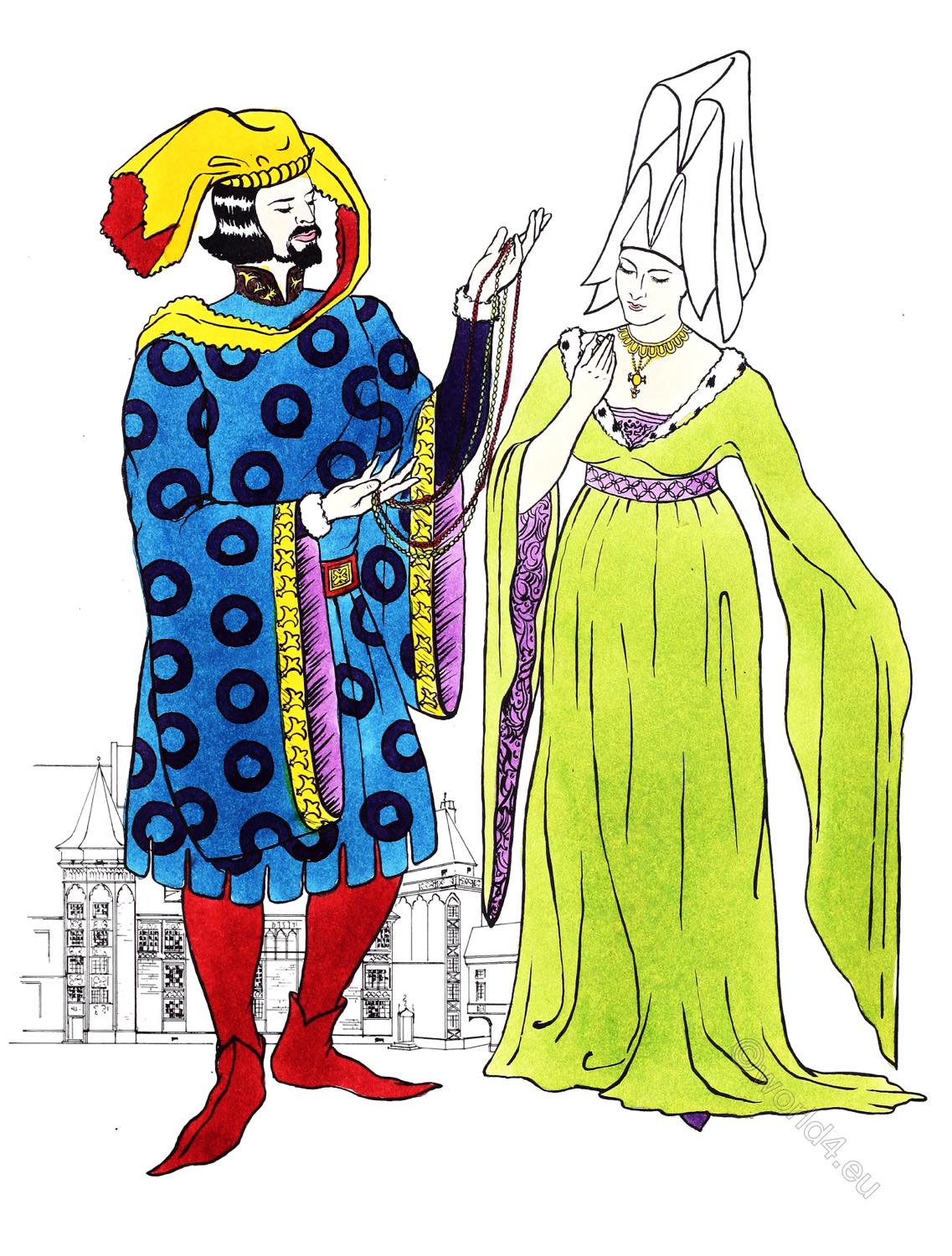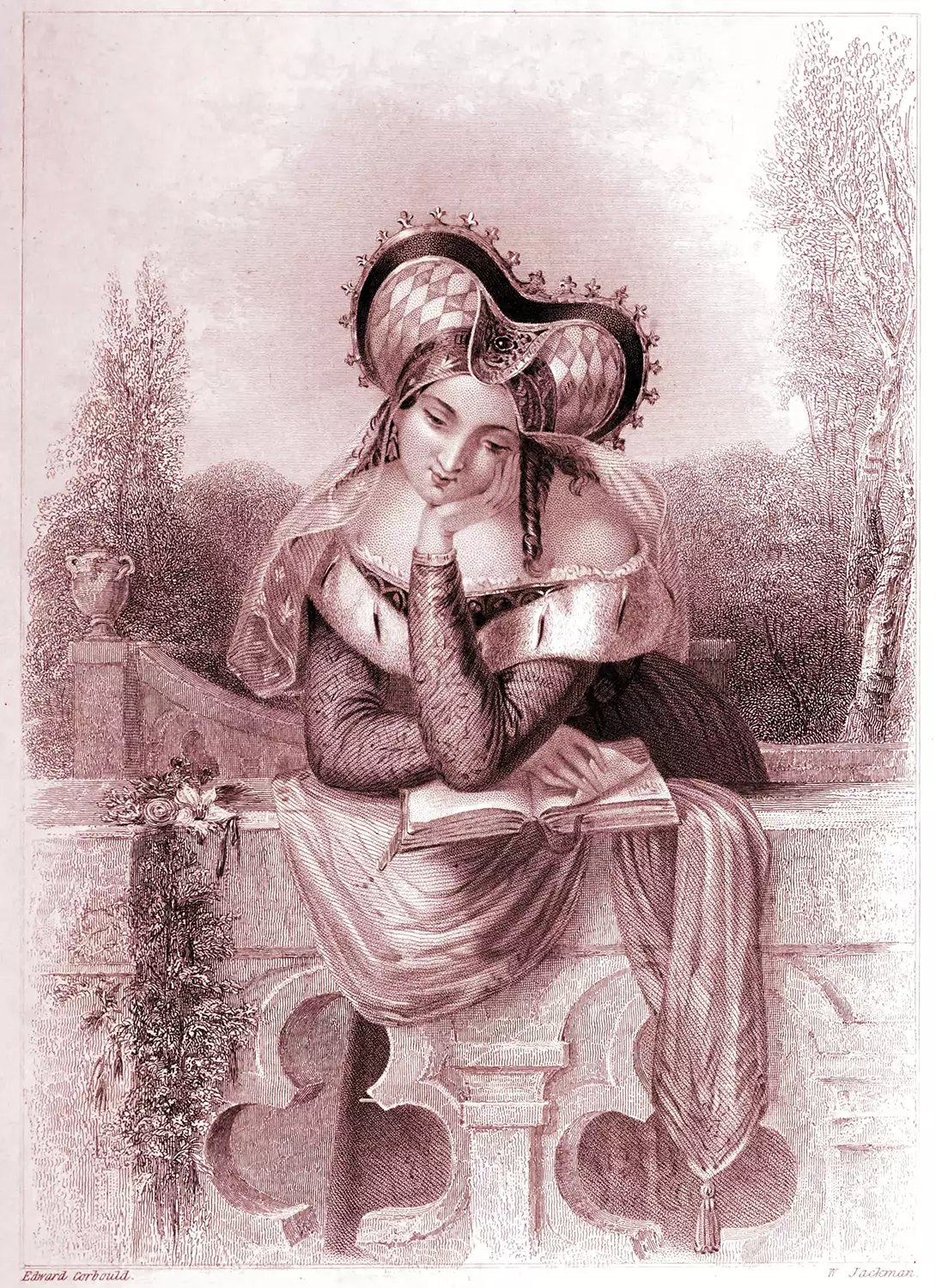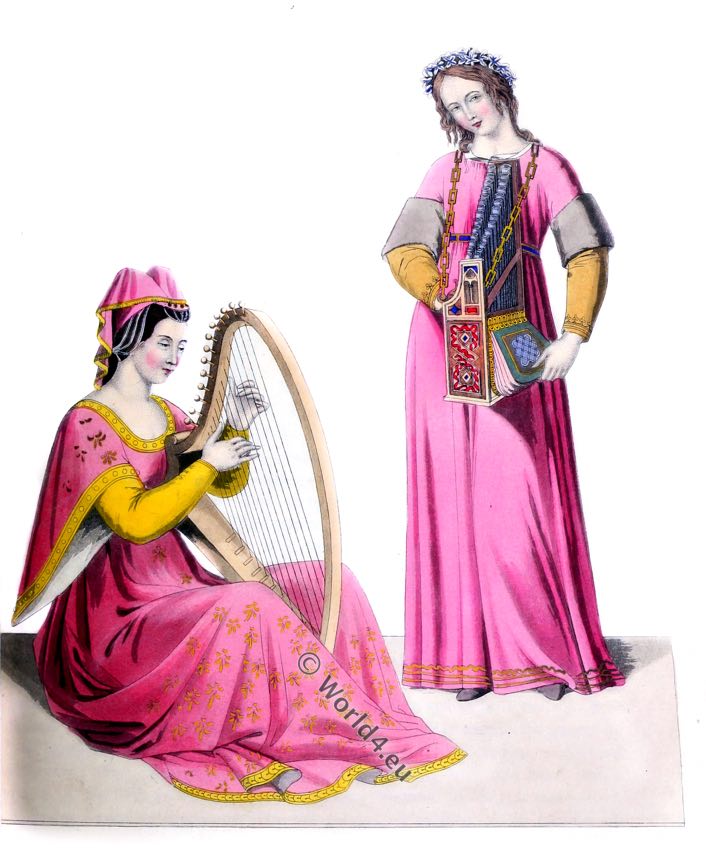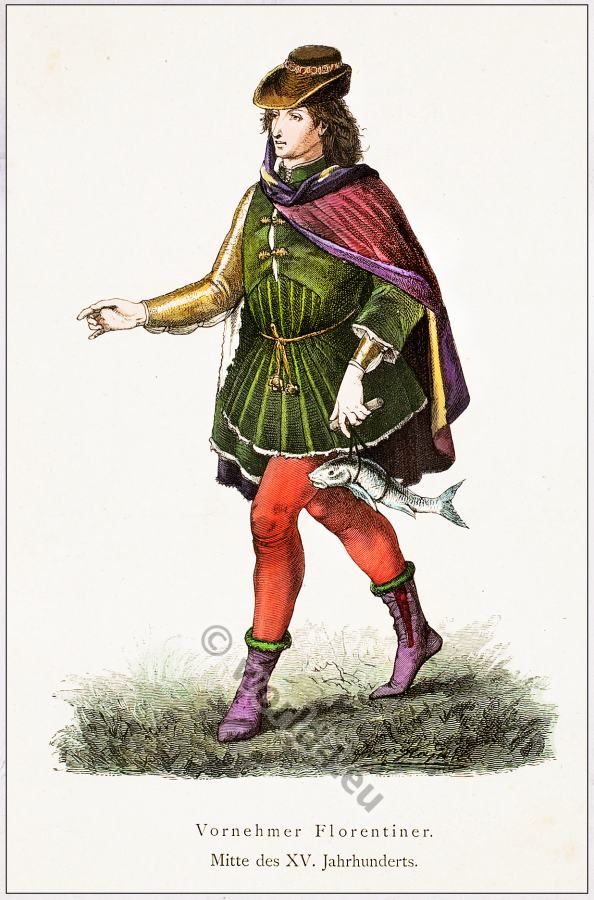
XV. Century.
PLATE NO. 29.
1400-1500.
The chaperon, cote-hardie, houppelande, liripipe, poulaines.
The costume shown here was worn in the late 14th or early 15th century. It was an exciting period when kings were fighting among themselves, and against the nobility and the church. Times were dangerous, exciting and adventurous as the costume exemplifies.
The man is wearing a typical ensemble of the period. What locks like a blue dress ie an outer garment called a houppelande. It fits the body close around the waist and then falls in a skirt, usually to the ground, though now and then, as shown here, to only slightly below the knee. Its characteristic features are the high collar, wide sleeves and the series of pleats, front and back as seen on the plate, reaching, above and below his girdle.
His hair is cut in the manner of the preceding century and he is wearing a beard and mustache. Later in the 15th century men were clean-shaven. On his head he is wearing a chaperon — a typical headdress of the 15th century. It was developed from the hood by putting the face-opening on the head, fastening up the gorget and winding the whole thing around with the liripipe. The chaperon shown here has its liripipe untwisted, thus giving a somewhat clearer idea, of what happened. Eventually the chaperon was sewn together and put on like a hut, saving the man from having to fuss around with the hood and liripipe every time he wanted to wear a chaperon. This one pictured, for example, is very probably sewn.
Although the hose look exactly like those on earlier plates, they are somewhat different. By the 15th century, hose viere made in one piece with u seat to them, like modern trousers. They were no longer separated leggings. Along the waistline of the hose is a series of holes that corresponded to a similar row of holes along the bottom of an undergarment (either the former cote-hardie or a short coat-like garment called the doublet. Its long, tight, fur-trimmed sleeve can be seen on the man’s left arm.) The hose and the upper garment were laced together by what were called “points” — small, metal-tipped laces much like our modern shoe laces. This system of fastening garments together with “points” lasted for the ensuing two hundred years. It was especially popular for fastening sleeves and hose to body garments. His long pointed shoes were known as poulaines, supposedly because they came from Poland. Such a shoe, with a point at front and back and a long toe, was common at this time.
The woman, like the man, is dressed in a typical headdress and gown of the 15th century. Her headdress, because of its shape, is called the “butterfly.” It is made of linen draped over a wire framework and covers the hair. Her gown, probably of velvet, a material that became very popular during the 1400’s, is the woman’s version of the houppelande. Its long flowing train, tight-fitting, pleated bodice and large V opening are common features. The flat fur collar reaching almost to the girdle is made of ermine. Grey squirrel was also considered aristocratic. The commoners used rabbit, fox and cheaper furs. The wide, voluminous sleeves were popular on the woman’s houppelande. When it was turned back over the arm a highly decorative embroidered lining was often revealed. The shoes the woman is wearing resemble those of the men, but have slightly smaller points.
Fabrics and decoration at that time were rich and handsome. Cutting the edges of garments in square, circular or leaf-like trimmings (foliating) continued from the previous period. Colors and jewelry were freely used. The red, green and blue shown here were favored, along with gold trimming or embroidery. The pattern on the man’s houppelande is a typical geometric all-over design of the period.
Source: Museum Extension Project. History of Costume.
Continuing
Discover more from World4 Costume Culture History
Subscribe to get the latest posts sent to your email.






